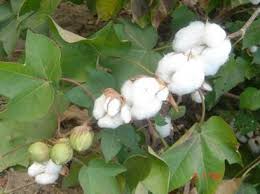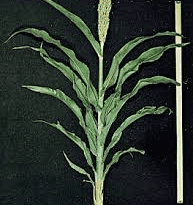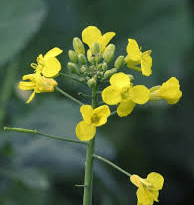Economic Importance, Uses, and By-Products of Cotton Plant Anther
Cotton Plant Anther is a reproductive structure found in the cotton plant (genus Gossypium) and other flowering plants. It is a part of the male reproductive system and plays a crucial role in the process of pollination and fertilization.
Anthers are typically located at the tip of the filament, which is a slender stalk-like structure that supports the anther. In the cotton plant, each flower usually has several anthers attached to the filament. The anthers are typically yellowish in color and have a distinct elongated shape.
The anther is composed of specialized tissues that contain pollen grains. The outer layer of the anther is called the epidermis, which protects the internal tissues. Beneath the epidermis, there are layers of cells that form pollen sacs or microsporangia. These sacs contain numerous pollen mother cells, which undergo meiosis to produce haploid pollen grains.
The mature anther undergoes dehiscence, which is the process of opening and releasing the pollen grains. In cotton plants, the anthers split open longitudinally to expose the pollen grains. The released pollen grains are then dispersed by various agents, such as wind or insects, to reach the female reproductive structures of other flowers.
The cotton plant anther is an important component of the reproductive cycle, as it produces pollen grains that carry the male gametes. These pollen grains are vital for successful pollination, where they are transported to the stigma of the pistil in the same or different flowers. Once the pollen grain reaches the stigma, it germinates, and the pollen tube grows down through the style, ultimately reaching the ovary where fertilization occurs.
The cotton plant anther is a crucial structure involved in the reproduction and propagation of the plant species. It produces and releases pollen grains, which are necessary for the transfer of male genetic material to the female reproductive organs, leading to the formation of seeds and the continuation of the plant’s life cycle.
Economic Importance, Uses, and By-Products of Cotton Plant Anther

The cotton plant anther, which is the male reproductive organ of the cotton plant, has limited economic importance and uses compared to other parts of the cotton plant. However, here are a few possible applications:
1. Plant Breeding: The anther contains pollen grains, which are essential for plant breeding and hybridization. Cotton breeders can collect anthers and use the pollen to cross-pollinate different cotton varieties, creating new hybrids with desired traits such as improved yield, disease resistance, or fiber quality.
2. Genetic Research: Anthers can be used in genetic research and molecular studies to understand the genetic makeup of cotton plants. Scientists can extract DNA from anthers to analyze specific genes or conduct genetic mapping, contributing to the development of genetically modified or improved cotton varieties.
3. Tissue Culture: Anthers can serve as a source of explants for tissue culture techniques. Explants are plant tissues that can be used to initiate cell or tissue cultures in the laboratory. Anthers can be used to develop callus cultures, which are masses of undifferentiated cells that can be induced to regenerate whole plants. This technique is useful for mass propagation of cotton plants with desirable traits.
Read Also : Economic Importance, Uses, and By-Products of Jute Stems
4. Pharmacological Applications: Certain compounds present in anthers may have pharmacological importance. Although research in this area is limited, some studies suggest that cotton plant anthers might contain bioactive compounds with potential medicinal properties. For instance, the anthers of Gossypium herbaceum have been investigated for their antioxidant and antimicrobial activities.
5. Medicinal Research: Anthers of some plant species, including cotton, have been investigated for their medicinal properties. They may contain compounds with potential therapeutic effects, such as antimicrobial, antioxidant, anti-inflammatory, or anticancer activities. Research studies are conducted to explore the chemical composition and pharmacological potential of cotton plant anthers, but it should be noted that these investigations are in the early stages and require further exploration.
6. Pollen Collection: While anthers contain pollen grains, which are crucial for plant reproduction, there is a niche market for collecting and selling pollen from specific cotton varieties. This pollen can be used in controlled breeding programs, hybrid seed production, or in vitro fertilization techniques. The demand for specialized cotton pollen can arise from cotton breeders or researchers working on specific cotton traits or breeding objectives.
7. Art and Crafts: Cotton plant anthers can be used in creative endeavors such as arts and crafts. Artists and hobbyists may incorporate anthers into various artistic projects, including floral arrangements, pressed flower art, or even using anthers as natural dyes or pigments.
8. Education and Research: Cotton plant anthers can be utilized as educational materials for teaching plant anatomy, reproduction, or genetics. They can be used in biology classrooms or research laboratories to demonstrate concepts related to flowering plants, pollen, and sexual reproduction.
9. Cultural or Traditional Practices: In certain cultural or traditional practices, cotton plant anthers may have symbolic or ceremonial significance. For example, in some cultural festivals or rituals, cotton anthers might be used for decorative purposes or as part of religious or traditional ceremonies.
It’s important to reiterate that these uses are relatively niche and do not have significant economic impact compared to the fiber and other parts of the cotton plant. The cotton industry primarily focuses on the cultivation, harvesting, processing, and utilization of cotton fibers for textile production, which remains the main driver of its economic importance
The Products and By-products That Can Be Derived From Cotton Plant Anther
The cotton plant anther, which contains pollen, does not have a wide range of products or by-products that can be derived from it. However, there are a few potential uses and processes associated with the cotton plant anther. Here are the main ones:
1. Pollen collection: Cotton plant anthers produce pollen, which can be collected and used for various purposes. Pollen collection is often performed to study plant genetics, conduct breeding programs, or for research purposes. For example, scientists might collect cotton plant pollen to study pollen tube growth, pollination mechanisms, or to develop new cotton varieties.
2. Pollen analysis: Pollen grains collected from the cotton plant anther can be analyzed to gain insights into the plant’s reproductive biology, genetic diversity, and pollen viability. Pollen analysis is particularly useful in plant breeding programs and in assessing the impact of environmental factors on pollination success.
3. Hybridization and breeding: Cotton plant anthers can be used in hybridization programs to create new cotton varieties with desired traits. By manually transferring pollen from one cotton plant to the stigma (the female reproductive organ) of another, breeders can create hybrids that combine the favorable characteristics of different cotton varieties. This process helps in developing cotton varieties with improved yield, resistance to pests or diseases, and enhanced fiber quality.
Read Also : Economic Importance, Uses, and By-Products of Jute Bark
4. Genetic transformation: Another application of cotton plant anthers is in genetic engineering or biotechnology research. The anthers can be used as a source of explants (tissues) for genetic transformation. Through techniques such as tissue culture and Agrobacterium-mediated gene transfer, foreign genes can be introduced into the cotton plant anther tissues to create genetically modified cotton plants with specific traits, such as insect resistance or herbicide tolerance.
5. Biochemical analysis: The anther tissues of cotton plants can also be used for biochemical analyses. Researchers may extract proteins, enzymes, or other bioactive compounds from the anthers for further study or industrial applications. For instance, certain enzymes or proteins present in the anther tissues may have potential applications in the textile industry or biopharmaceutical production.
6. Cotton Fiber: The most well-known and widely used product derived from the cotton plant is cotton fiber. The fibers are obtained from the bolls, which are the seed capsules of the cotton plant. These fibers are composed of cellulose and are used to produce textiles, including clothing, towels, beddings, and various types of fabrics. Cotton is valued for its softness, breathability, and absorbency.
7. Cottonseed: The cottonseed is a by-product of the cotton plant and has several uses:
a. Cottonseed Oil: Cottonseed oil is extracted from the seeds and is commonly used in cooking, frying, and salad dressings. It is also utilized in the production of margarine, shortening, and other food products. Additionally, cottonseed oil is used in the manufacturing of cosmetics, soaps, and candles.
b. Cottonseed Meal: After the oil extraction process, the remaining material is known as cottonseed meal. It is a protein-rich by-product that is commonly used as a livestock feed supplement. Cottonseed meal is nutritious and provides a good source of protein, fiber, and energy for animals.
c. Cottonseed Hulls: The outer covering of the cottonseed, known as hulls, is a fibrous material. It is used as a feed ingredient for ruminant animals and can also be utilized as a raw material for industrial applications such as mulching, composting, or fuel.
8. Cottonseed Linters: Linters are the short fibers that remain on the cottonseed after the ginning process. These fibers are too short for textile use but have various industrial applications. They are used in the production of cellulose-based products such as paper, cellulose derivatives, plastics, rayon, and cosmetics.
It’s important to note that while the cotton plant anther does not have direct commercial applications, it plays a crucial role in the reproductive process of the cotton plant and contributes to the production of cotton fibers through pollination.
Read Also : Products That Can Be Derived From Litters








